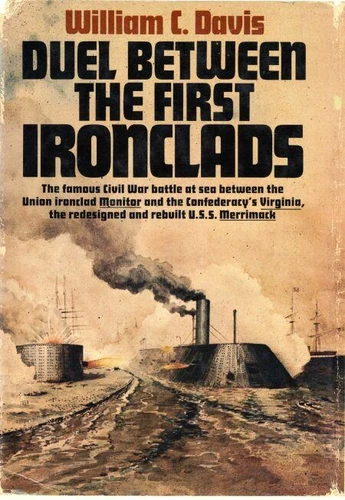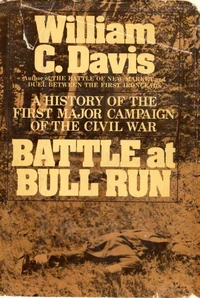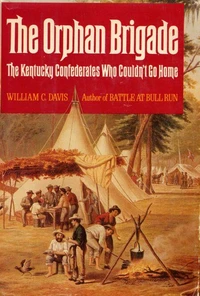Duel Between the First Ironclads
Par :Formats :
Disponible dans votre compte client Decitre ou Furet du Nord dès validation de votre commande. Le format ePub protégé est :
- Compatible avec une lecture sur My Vivlio (smartphone, tablette, ordinateur)
- Compatible avec une lecture sur liseuses Vivlio
- Pour les liseuses autres que Vivlio, vous devez utiliser le logiciel Adobe Digital Edition. Non compatible avec la lecture sur les liseuses Kindle, Remarkable et Sony
- Non compatible avec un achat hors France métropolitaine
 , qui est-ce ?
, qui est-ce ?Notre partenaire de plateforme de lecture numérique où vous retrouverez l'ensemble de vos ebooks gratuitement
Pour en savoir plus sur nos ebooks, consultez notre aide en ligne ici
- Nombre de pages201
- FormatePub
- ISBN978-0-307-81750-1
- EAN9780307817501
- Date de parution09/05/2012
- Protection num.Adobe DRM
- Taille5 Mo
- Infos supplémentairesepub
- ÉditeurDoubleday
Résumé
One was called "a tin can on a shingle"; the other, "a half-submerged crocodile." Yet, on a March day in 1862 in Hampton Roads, Virginia, after a five-hour duel, the U. S. S. Monitor and the C. S. S. Virginia (formerly the U. S. S. Merrimack) were to change the course of not only the Civil War but also naval warfare forever. Using letters, diaries, and memoirs of men who lived through the epic battle of the Monitor and the Merrimack and of those who witnessed it from afar, William C.
Davis documents and analyzes this famous confrontation of the first two modern warships. The result is a full-scale history that is as exciting as a novel. Besides a thorough discussion of the designs of each ship, Davis portrays come of the men involved in the building and operation of America's first ironclads-John Ericsson, supreme egoist and engineering genius who designed the Monitor; John Brooke, designer of the Virginia; John Worden, the well-loved captain of the Monitor; Captain Franklin Buchanan of the Virginia; and a host of other men on both Union and Confederate sides whose contributions make this history as much a story of men as of ships and war.
Davis documents and analyzes this famous confrontation of the first two modern warships. The result is a full-scale history that is as exciting as a novel. Besides a thorough discussion of the designs of each ship, Davis portrays come of the men involved in the building and operation of America's first ironclads-John Ericsson, supreme egoist and engineering genius who designed the Monitor; John Brooke, designer of the Virginia; John Worden, the well-loved captain of the Monitor; Captain Franklin Buchanan of the Virginia; and a host of other men on both Union and Confederate sides whose contributions make this history as much a story of men as of ships and war.
One was called "a tin can on a shingle"; the other, "a half-submerged crocodile." Yet, on a March day in 1862 in Hampton Roads, Virginia, after a five-hour duel, the U. S. S. Monitor and the C. S. S. Virginia (formerly the U. S. S. Merrimack) were to change the course of not only the Civil War but also naval warfare forever. Using letters, diaries, and memoirs of men who lived through the epic battle of the Monitor and the Merrimack and of those who witnessed it from afar, William C.
Davis documents and analyzes this famous confrontation of the first two modern warships. The result is a full-scale history that is as exciting as a novel. Besides a thorough discussion of the designs of each ship, Davis portrays come of the men involved in the building and operation of America's first ironclads-John Ericsson, supreme egoist and engineering genius who designed the Monitor; John Brooke, designer of the Virginia; John Worden, the well-loved captain of the Monitor; Captain Franklin Buchanan of the Virginia; and a host of other men on both Union and Confederate sides whose contributions make this history as much a story of men as of ships and war.
Davis documents and analyzes this famous confrontation of the first two modern warships. The result is a full-scale history that is as exciting as a novel. Besides a thorough discussion of the designs of each ship, Davis portrays come of the men involved in the building and operation of America's first ironclads-John Ericsson, supreme egoist and engineering genius who designed the Monitor; John Brooke, designer of the Virginia; John Worden, the well-loved captain of the Monitor; Captain Franklin Buchanan of the Virginia; and a host of other men on both Union and Confederate sides whose contributions make this history as much a story of men as of ships and war.





